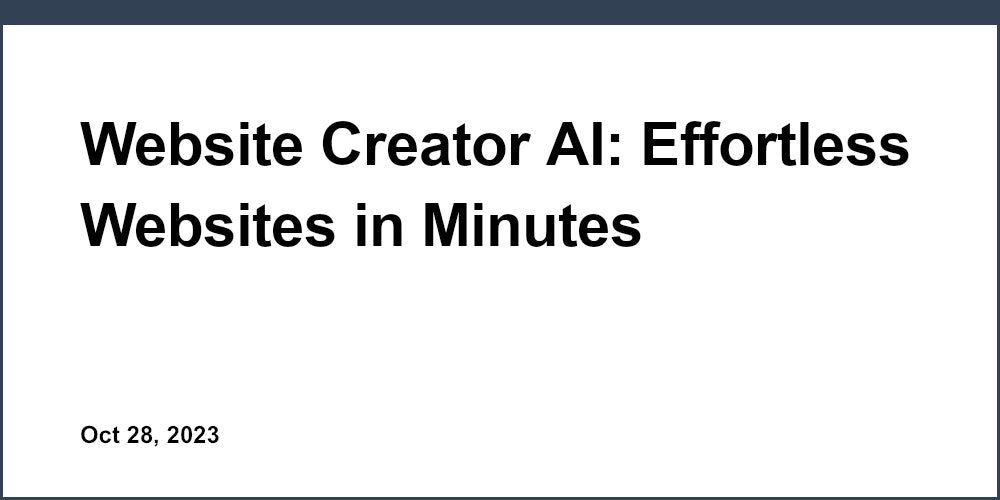Creating effective landing pages is essential for startups and SaaS companies looking to generate leads, demo signups, free trial subscriptions, and sales. A high-converting landing page aligns with your target audience and guides them towards a clear call-to-action.
This comprehensive guide provides startups and SaaS companies with best practices for creating landing pages that deliver results. By following the recommendations around layout, copy, visuals, conversions, and mobile optimization, you can significantly improve ROI.
Defining Landing Pages
A landing page is a standalone web page focused on a single goal or conversion outcome. Unlike your home page, a landing page presents a clear call-to-action to visitors. Common types include:
- Lead generation to capture emails or contacts
- Promotion of a specific product or service
- Sales or conversions to a paid plan
- Subscription signups for trials, demos, etc.
An effective landing page moves visitors through a conversion funnel tailored to their needs. Take time to understand your audience and craft targeted landing pages.
Elements of an Effective Landing Page
Key elements of an effective landing page include:
- Clear headline communicating your value proposition
- Compelling copy focused on customer benefits
- Strong call-to-action making the desired action obvious
- Relevant visuals to engage visitors
- Minimal distractions to keep focus on conversion
Understand your audience's intent and guide them towards conversion. Ensure fast load times, mobile responsiveness, and a clear path to the call-to-action.
Crafting the Optimal Layout
Most landing pages follow a similar layout convention:
- Header with branding and navigation
- Hero banner with headline and sub-headline
- Content sections showcasing offering
- Social proof like testimonials
- Clear calls-to-action
Use white space between elements and make important items like headlines prominent. Leverage layout templates to accelerate design.
Choosing the Right Visual Branding
Images, color schemes, and typography set the visual style and tone. Choose branding aligned with your audience. Invest in high-quality graphics and photos. Ensure consistent branding across pages. Tools like Unicorn Platform simplify branding for non-designers.
Crafting Compelling Copy
Copy is crucial for conveying your message and driving conversions. Do keyword research and optimize copy for SEO. Focus on addressing pain points with benefit-focused messaging. Clearly explain the desired user action and your value proposition.
Optimizing for Higher Conversions
Optimizing landing pages for better conversion rates is key for startups. Use A/B and multivariate testing to refine pages over time. Speed optimizations can lift conversions by reducing abandonment. Optimization should be ongoing.
Setting Goals and KPIs
Align page goals with broader business or campaign objectives. Choose 1-2 key performance indicators like leads or sales. Set numerical targets based on research and benchmarks. Use analytics to monitor performance versus goals.
Improving Page Load Speed
Faster page loads increase conversions by reducing abandonment. Try compressing images, minifying code, and optimizing content delivery. Tools like Unicorn Platform automate optimization. Monitor speed with analytics.
Testing and Iterating Designs
Use A/B and multivariate testing to optimize page elements like copy, visuals, and call-to-action. Continual testing helps improve conversions over time. Focus initial tests on high-impact elements.
Analyzing Performance Data
Monitor visitor behavior with analytics to identify issues. Track key metrics like bounce rate and conversion funnel. Segment data to uncover insights. Simplify analysis with intuitive reporting tools.
Optimizing Technical SEO
Optimize technical elements like page titles, metadata, URL structure for better organic visibility. Include target keywords in titles and URLs. Monitor search traffic and rankings. Content and backlinks also important for SEO.
Creating Mobile-Friendly Pages
With increasing mobile usage, optimizing for mobile is crucial. Use responsive design to create an ideal experience on any device. Follow best practices for typography, tap targets, and speed. Test extensively on real mobile devices.
Implementing Responsive Design
Responsive design provides the best cross-device experience versus separate mobile pages. Leverage flexible grids, images, and media queries to adapt sites. Tools like Unicorn Platform optimize for mobile by default. Test responsiveness thoroughly.
Focusing Above the Fold
Prioritize important visible elements in mobile layouts. Highlight your value proposition, hero image, headline and call-to-action above the fold. Remove unnecessary distractions.
Testing Mobile User Experience
Testing on real mobile devices is key. Utilize tools to test across multiple devices. Conduct usability testing with mobile users. Check page speed insights. Monitor mobile analytics.
Designing Effective Mobile CTAs
Optimize mobile calls-to-action by increasing tap target size and improving spacing. Limit steps before the CTA. Prominently highlight CTAs in contrasting colors. Fewer, focused CTAs tend to convert better.
Integrating Other Platforms
Connecting your landing page to sales and marketing platforms can lift conversions. Email services, payment processors, live chat, appointment scheduling, social media, and more can optimize workflows.
For example, integrating scheduling apps like Calendly allows instant booking right on your site. Payment gateways like Stripe enable fast checkout.
Embedding Social Content
Build credibility by embedding relevant social media content from platforms like Facebook, Instagram, Twitter, and YouTube. Unicorn's embed widgets simplify integration. Ensure embeds align with your messaging and audience.
Continually Testing and Optimizing
Creating a high-converting landing page takes continual refinement and testing over time. Outline a process for ongoing optimization and improvement. Analyze performance data to identify areas to test. Prioritize testing high-impact page elements first.
Mapping Pages to Goals and Funnel Stages
Map your landing pages to visitor journeys and business goals. Consider typical funnel stages like awareness, interest, consideration, and conversion. Ensure pages align with each stage.
Leveraging Unicorn Platform
Unicorn Platform provides purpose-built templates, components, integrations and optimization tools to help startups and SaaS companies create high-converting landing pages quickly.
It offers startup-specific features like customizable templates, drag and drop components, conversion optimization tools, analytics, and smooth integrations with other platforms.
Continually test and refine your landing pages over time. By following these best practices, you can craft landing pages that deliver impressive results.



